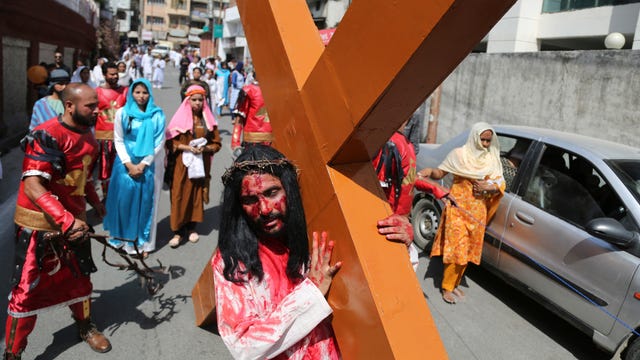Maundy Thursday: know how, when and why it’s observed

As the Thursday preceding Easter Sunday dawns each year, the world turns its attention to a pivotal moment in Christian tradition: Maundy Thursday. This sacred day commemorates the Last Supper, the final meal Jesus shared with his apostles before his crucifixion.
It holds profound significance as it signifies the culmination of Lent, a period of reflection and sacrifice observed by many Christians worldwide.
Why is it observed?
At the heart of Maundy Thursday lies the symbolic act of Jesus washing the feet of his disciples, exemplifying humility and service. This act, known as the Mandatum, serves as a timeless reminder for believers to follow in Jesus’s footsteps by serving one another with love and humility.
Throughout history, various customs and traditions have emerged to honor this solemn occasion. In the United Kingdom, one such tradition is the distribution of Maundy money by the reigning monarch.
Read also:
- Why Tithing Is a Big Scam in Christianity
- Jesus Christ has risen above all infectious diseases
- 10 things you should avoid during Christmas celebration
- Easter Celebration: Time to pause the rice ritual
Originating from an ancient practice of washing the feet of the poor, Maundy money symbolizes acts of charity and compassion. Each year, recipients, often elderly individuals, are chosen to receive these specially minted coins as a gesture of goodwill and remembrance.
When it’s observe
The tradition of the Royal Maundy Service dates back centuries, with its roots tracing as far back as 600 AD.
In modern times, the ceremony has evolved, with the reigning monarch accompanied by dignitaries and clergy, presiding over the distribution of Maundy money.
The late Queen, accompanied by The Duke of Edinburgh, partook in this sacred ritual, presenting recipients with coins bearing the image of the current monarch, a tradition dating back to 1670.
Alongside the Maundy money, another cherished aspect of the ceremony is the presentation of a nosegay bouquet to each recipient.
Comprising a delicate arrangement of daffodils, primroses, stocks, purple statice, freesias, ivy, and hebe, interspersed with fragrant herbs like rosemary and thyme, these bouquets serve as symbols of spring and renewal, embodying the spirit of hope and new beginnings.
Why it’s observe
As Maundy Thursday unfolds each year, it serves as a poignant reminder of the enduring legacy of Jesus’s teachings, inspiring believers to emulate his compassion, humility, and selflessness in their own lives.
Through acts of service and charity, Christians around the world honor the essence of Maundy Thursday, keeping alive its timeless message of love and sacrifice.
How is Maundy Thursday observe:
There is not one specific order in which Maundy Thursday is observed. However, many Christians choose to mark this day in different ways – and these may include:
- Communion services held in churches.
- Seder Supper – a meal eaten on the first night of Passover.
- Tenebrae Service – a religious service held three days before Easter. This is typically held in Western Christianity (one of two sub-divisions of the religion).
- Stripping the Sanctuary – a practice which allows people to prepare for Easter. This involves cleaning the church in silence – a custom which dates back to the seventh century.


